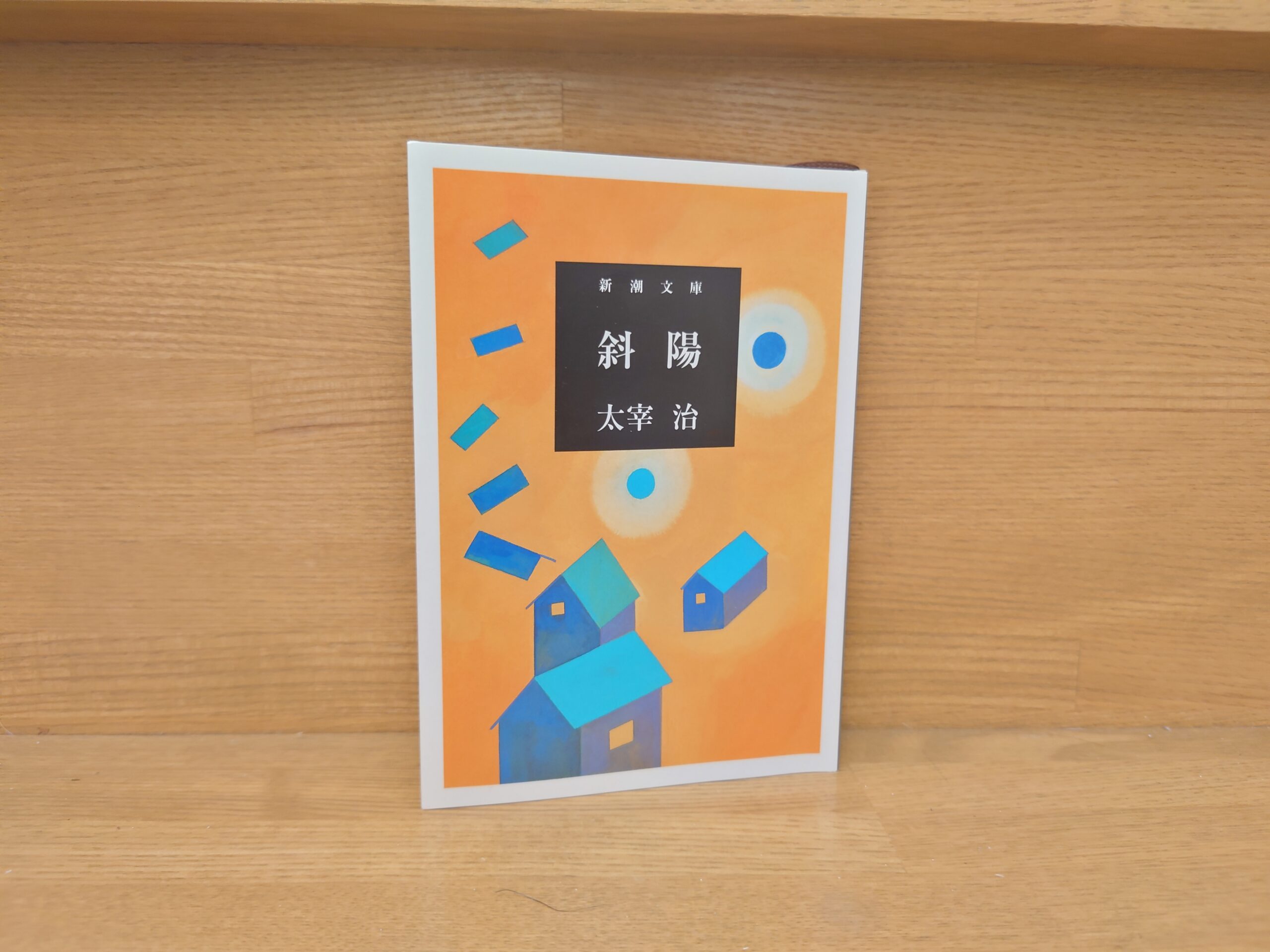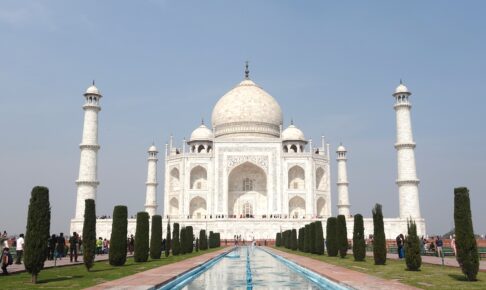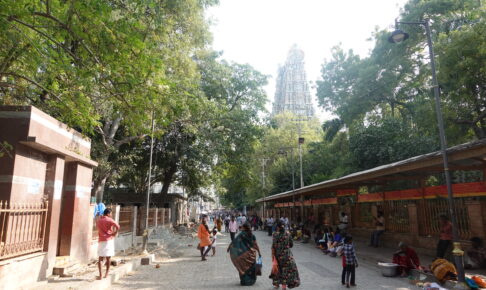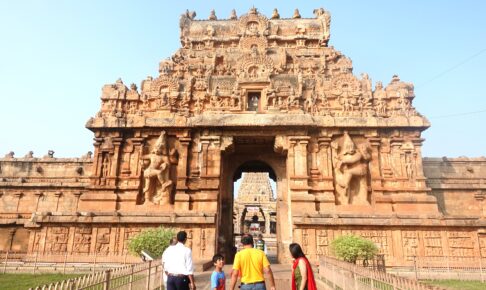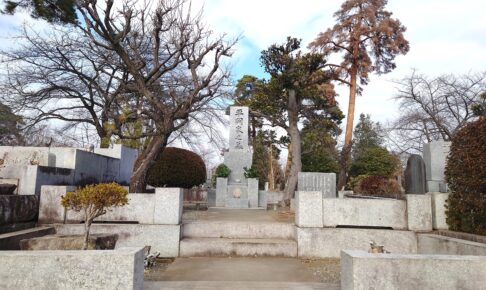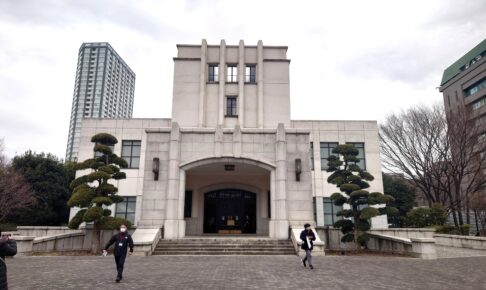Osamu Dazai's "Shayo" Synopsis and Impressions - The Aesthetics of Ruin. A masterpiece that gave birth to the Shayo clan. The work that determined Yukio Mishima's dislike of Dazai.
I would like to introduce "Shayo" published by Osamu Dazai in 1947. I read it in the 143rd printing of the 2023 edition published by Shinchosha.
Let's take a quick look at the book.
When Naoharu returned from the south, our real hell began.
This is a masterpiece that gave birth to the term "Shayozoku. Set in the home of a fallen aristocrat, the symphonic music of ruin quietly begins with four characters, including Naoharu, who is self-destructive due to drug addiction.
Kazuko tries to live "for love and revolution" despite her impulse toward destruction; Naoji is ruined by drug addiction; her mother is the last noblewoman; and Uehara is a popular writer who caricatured himself in the postwar era. Set in the family of a fallen aristocrat, the film depicts the tragic sentiment that a more beautiful destruction is necessary for a true revolution, in the midst of the four people's four different forms of destruction. Published in 1947, this is a representative work of Dazai literature that gave birth to the term "Shayozoku.
AmazonProducts Page.
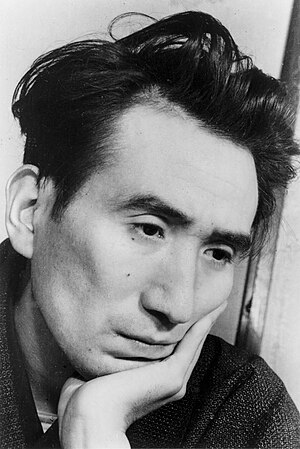
Shayo" is Osamu Dazai's masterpiece, and has become such a social phenomenon that the term "Shayozoku" was coined to describe young people who are fascinated by his works.
The background of this work is explained at the end of the book as follows
Osamu Dazai despairs of human egotism, pettiness, and antiquity, which have not changed even after the defeat in the war. He decides to attack the world's antiquity, pettiness, evil, and hypocrisy by exposing, thoroughly criticizing, and denying the antiquity, pettiness, and egoism within himself. He launches a tremendous battle to overturn all established morality and transform moral values such as "happiness at home is the basis of all evil," "parents are more important than children," and "playing for the sake of righteousness. This is a sharp attack on the cowardice and ugliness within us all. He believes that a more beautiful destruction is necessary for a true revolution, and writes "Shayo" (The Setting Sun), a long work that is a hymn to the beauty of the past and a search for a new start for human beings who live in love and revolution. Shayo" is the culmination of Dazai's literature. Dazai entrusts his self at the time of "Late Years" to Naoharu, a drug addict who is going through a period of ruin. His mother, the last aristocrat, is the ideal image of Dazai in his middle period, as seen in "Udaijin Sanetomo," and Kazuko, who tries to live "for love and revolution" while carrying a pit in her stomach, reflects the way of life of Dazai, who lived through the difficult war period. Uehara, a popular writer, is a caricature of Dazai after the war. Shayo" is a symphony of the four men and their four forms of perdition, a full-fledged romance rare in Japan, with a ray of prayer hidden at the bottom that strikes the reader's soul and intoxicates him with its artistry. This work made Osamu Dazai a popular writer, but his despair over postwar man and society grew deeper and deeper, and he risked death to write "Ningen Shikkaku (Human Disqualification)," in which he gouged out his own inner self to explore and confess the truth about the mental anguish of modern man.
Shinchosha, Osamu Dazai, Shayo, p. 226-227
This work is the culmination of Osamu Dazai's work, and each of the four main characters is entrusted with great feelings and tells a story.
As the book "Bungo Navi: Osamu Dazai" says, "'Shayo' depicts the postwar downfall of people who were wealthy before the war, but there is a palpable sense of emotion at the sight of their beautiful demise.
In addition, the commentary at the end of this book also includes a commentary on Chekhov, the great Russian writer.The Cherry OrchardIt was pointed out that the story is closely related to the story of the "Kozuko" and her mother, and this is exactly true. In particular, the story of Kazuko, one of the main characters, and her mother is filled with the sorrow of a fallen aristocrat.
However, for me, this novel was very interesting to read not so much because it is Dazai's masterpiece or because of his relationship with Chekhov, but because of his association with Yukio Mishima.
I have been introducing Yukio Mishima's works on this blog. How did I come to read Mishima's literature?Kinkakuji TempleI have a strong desire to learn more about Mishima, which I will not discuss here because I have already talked about it in the article "Mishima. And my study stance is that if I want to know about one person, I must also know about the opposite person. It is the same as saying that if you want to know Dostoevsky, you should also read Tolstoy and Turgenev.
And who is the writer opposite to Yukio Mishima?
The basis for this is Mishima's own public statement, "I don't like Dazai's literature.
For more information on this connection between Yukio Mishima and Osamu Dazai, see Yukio MishimaSun and Iron: My Pilgrim's Progress.The book "Mishima and Dazai" is a very interesting story. It is quite long, but it is a very interesting story in terms of the relationship between Mishima and Dazai, so I will read it carefully. The following is Mishima's recollection of 1947, when "Shayo" had just been published. At that time, Mishima was 22 years old and Dazai was 38, one year before his suicide.
Osamu Dazai moved to Tokyo in November 1946, the year after the end of the war, and after publishing various famous short stories, he began serializing "Shayo" in "Shincho" in the summer of 1947.
I had previously bought a copy of "Fictional Wanderings" at a used bookstore and read the trilogy and "Das Gemeine," but it was probably the worst choice I could have made to begin reading Dazai's work. The caricature of self in his works, which I have always disliked the most, and the sense of literary world and the provincial ambition of a boy who came to Tokyo with an oi behind his back, were the most unbearable things to me.
Of course, I recognize his rare talent, but it is rare for a writer to make me feel so much physiological repulsion from the very beginning, perhaps because he is the type of writer who, by the law of love and hate, deliberately reveals the parts of me that he wants to hide the most. Thus, at the same point where many literary youths rejoice at discovering their own portraits in his literature, I may have turned away in a hurry. To this day, however, I still have the prejudice of a city-bred person who, whenever he encounters anything that reminds him of "the provincial ambition of a boy who came to Tokyo with an oi," can't help but poke his nose up at it. This is an odor that I was quick to detect in many of the up-and-coming writers who appeared afterward, who at first glance appeared to be urbanists, and I was quick to detect it and shut them down.
The fever for Dazai among the young people around me was growing, and it seemed to have reached its peak when "Shayo" was published. I became more and more prejudiced, and began to advocate a hatred of Dazai.
When "Shayo" was published, the public and the literary world were extremely excited. Today, this kind of literary frenzy is hard to imagine. Readers have become frighteningly cool compared to those days.
I also started reading the book, but I stumbled in the first chapter. The aristocrats in the novel are, of course, an allegory of the author and do not have to be real aristocrats, but as long as it is a novel, some "Makoto-ness" is necessary. I was disgusted by that alone. A daughter of a noble family refers to the kitchen as "selfish. A daughter of the aristocracy refers to the kitchen as "the kitchen kitchen of the family," or "the way mother's meals are served. Of course, this should be "how your mother eats her meals. The mother herself thought it was enough to use honorifics for everything, so she used honorifics for herself as well,
What is Kazuko and her mother doing now?doTake a guess.
And so on. What's more, they are urinating standing up in the garden!As my criticism of Dazai's literature had become so loud, my friends were interested in taking me to see him. Mr. Yashiro and his friends had already visited Mr. Dazai frequently, and it was no problem for them to take me to see him.
Chuo Koron Shinsha, Yukio Mishima, Taiyo to Tetsu, Mine no Itinerant Era, p.135-137
In this it was said,Of course, I recognize his rare talent, but it is rare for a writer to repulse me so physiologically from the start, perhaps because he is the type of writer who, by the law of love and hate, deliberately reveals the parts of me he most prefers to keep hidden. Thus, at the same point where many literary youths rejoice to find their portraits in his literature, I may have turned my head away in haste."Mishima's words are so important. Mishima felt that he had something in common with Dazai at the deepest level of his self-confidence. However, Mishima differed from other literary youths in that, while he usually found solace in Dazai's works, Mishima felt a strong rebellion against them. I feel that this is a major key to Mishima's literature and thought.
Finally, young Mishima comes face to face with Dazai.
My memory of the season in which I visited Mr. Dazai is not so clear now, but it must have been autumn, around the time when the serialization of "Shayo" was finished. I think the friends who took me there were Mr. Shizukazu Yashiro and his literary friend Mr. Harada, who later died prematurely, but I am not sure about that either.
I was probably dressed in a kasuri kimono and hakama, and I had never worn kimono before, but the fact that I was dressed in such an outfit was fully in consideration of Mr. Dazai, or to put it more exaggeratedly, I felt like a terrorist going out with a dagger in my pocket.
The place seemed to be on the second floor of an eel restaurant, and when I climbed the dark stairs and opened the karakami, I found a large number of people sitting in a tatami room about 12 tatami mats high, under a dark electric light.
Or it could have been a fairly bright electric light, but in my memory, when I think of the "praise of despair" atmosphere of a certain postwar era, it must inevitably be a somewhat wispy tatami mat and a dark electric light.
Mr. Dazai and Mr. Katsuichiro Kamei sat side by side in the upper section of the room, with young men around them and around the four corners of the room. I was introduced by a friend and immediately invited to sit in front of Mr. Dazai, where I was given a sake cup. The atmosphere in the room seemed to me to be extremely sweet, like that of a priest and a congregation who believed in each other, all moved by Mr. Dazai's every word, sharing their excitement in secret, and waiting for the next revelation to come soon. I may have had some bad preconceptions about this, but I am sure that there was also an atmosphere of great naivete in the air. The word "spoiled" in a word is different from the spoiled way of today's young people, but it was a very peculiar, dark, lyrical, and ...... "Dazai-like" atmosphere, filled with the pride that they represented the diseases of the times, while at the same time being very pathetic. It was too "Dazai-like.
Everywhere I came, I was looking for the right moment to say the one thing I had made up my mind to say out loud. If I did not say it, I would have lost my reason for coming here, and I would have lost sight of my literary way of life as well.
But, to my shame, I think I said it in a rather ill-advised, smirking, rote tone. In other words, I said this to the actual Mr. Dazai, who was standing right in front of me.
I don't like Dazai's literature.
At that moment, Mr. Kamei looked at me blankly, then lightly backed away and looked as if he had been caught flat-footed. But then he immediately collapsed, turned halfway toward Kamei and said to no one in particular, "Even if I said that, since you're here like this, you still like me, don't you? You know, I still love you."
-With this, my memory of Mr. Dazai was suddenly cut off. Perhaps it was because I felt uncomfortable and left without warning, but Mr. Dazai's face, from the depths of the postwar darkness, suddenly approached me, and then quickly receded into the darkness again. His devastated face, his Christ-like countenance, his face that was "typical" in every sense of the word, disappears once again, never to be seen by me again.
Now that I am the same age as Mr. Dazai was then, I do not regret my own youth's cliquishness, but I can imagine how he felt when a young man he had just met told him to his face, "I don't like your literature. I myself have encountered such a situation on several occasions.
In an unexpected place and at an unexpected time, an unknown young man approaches you, his face pale with nervousness, his lo contorted into a smile, and in order not to miss the opportunity to prove his sincerity, he suddenly says, "I don't like your literature. I hate your literature. It is the fate of literary people to meet such literary assassins. Of course, I do not love such a young man. I don't tolerate all of this adolescence. I will either smile like an adult and let it slip through, or pretend not to hear it.
The only difference between Mr. Dazai and myself, and by extension between our literature, is that I would never say, "I'm here like this, so I like it.
Chuo Koron Shinsha, Yukio Mishima, Taiyo to Tetsu, Mine no Itinerant Era, p.138-141
This is the episode from which "I don't like Dazai's literature.
It is an act that shows the young Mishima's rebellious spirit in saying such a thing to the adults in front of him.
Nevertheless, the atmosphere of the young people in the shanghai tribe, which was also a popular term at the time, wasThe atmosphere in the hall seemed to me to be something extremely sweet, like a priest and his congregation who believed in each other, all moved by his every word, sharing their impressions in secret, and waiting for the next revelation to come soon. I may have had some bad preconceptions about this, but I am sure that there was also an atmosphere of great naivete in the air. The word "spoiled" in a word is different from the spoiled way of the young people of today, but it was a very peculiar, pathetic, dark, lyrical atmosphere of that era, filled with pride that they represented the diseases of the times, ...... in other words, it was too "Dazai-like. Dazai-like."I must say that I am amazed at Mishima's power of observation. I feel as if I were there when I read this.
Perhaps it was not only Dazai literature itself that Mishima disliked, but also the atmosphere of these young people.
In fact, Mishima was laterAn Introduction to HagakureHe is quite stoically oriented toward the bushido way of life, as described in the following section. The "spoiled" atmosphere of the Shayo clan must have been something Mishima could not resist.
However, another point I would like to make is that there may have been some hidden jealousy toward Osamu Dazai, who had an immense influence on the youth. Although it was 20 years before he met Dazai, Mishima himself had formed an organization called "Tatenokai" and worked together with young people shortly before he committed suicide in 1970. It is thought that Mishima himself had a strong desire to share his ideas with others. Such complex feelings may have been a reaction against Dazai.
Now, I have talked more closely about Mishima and Dazai than "Shayo" itself, but I myself am rather uncomfortable with "Shayo". My literary preference is for Mishima. However, just like the question of "Dostoevsky or Tolstoy," it is impossible to love both literatures if they are so opposite. It is not a question of which is better.
However, there are certain things that can be seen by comparing the two readings. To know why Mishima disliked Dazai is synonymous with knowing what Mishima likes and desires. And the differences not only in thought but also in style will be a great learning experience.
In this sense, it was gratifying to be able to read Dazai's masterpiece "Shayo" here.
The above is a synopsis of Osamu Dazai's "Leaning Sun" and my impression - The Aesthetics of Ruin. A masterpiece that gave birth to the Shayo clan. The work that determined Yukio Mishima's dislike of Dazai".
Next Article.
Click here to read the previous article.
Related Articles












